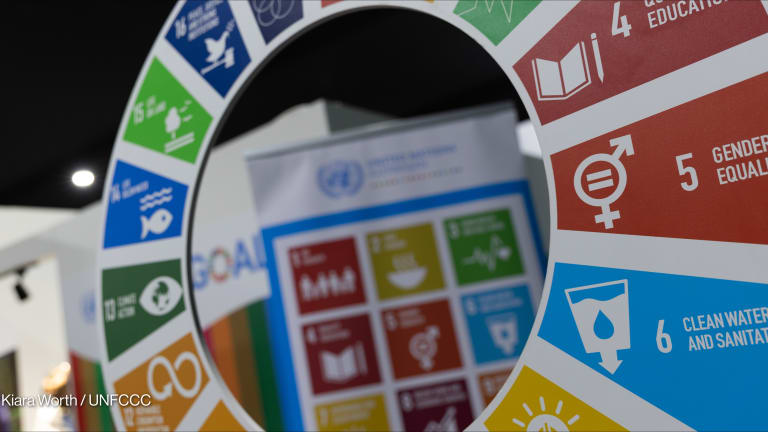
MANILA — Mobile phones have introduced a sea of opportunities in every sector imaginable, and that includes in finance. Today, anyone with a cellphone can engage in one form or another of cashless transaction, be it paying bills, sending phone credit, transferring cash, or buying goods and services — even in flea markets.
But what makes this a game changer in the financial sector is how it has penetrated different levels of society. This applies particularly to the unbanked, who are unable to access formal financial institutions and often borrow money from informal lenders who may charge high interest rates and where there is no guarantee of consumer protection.
In recent years, new technologies have emerged that are being used to complement and further what mobile money has achieved: machine learning, peer-to-peer lending, biometric technology, cloud computing, and blockchain, among others.
Most of these technologies were developed for other purposes, meaning outside the financial sector. One of the earliest uses of machine learning, for example, was in a game of checkers. Blockchain was mainly used for bitcoin transactions, which, at least in its early days, was mainly used for gaming.
But they are now increasingly being used to address cost issues, improve efficiencies, and bring convenience in the financial sector, said Robin Newnham, head of policy analysis and capacity building at Alliance for Financial Inclusion. Some banks and microfinance institutions, for example, have started to use cloud computing — essentially having data stored and accessed online instead of a physical storage devices such as hard drives — to drive down cost and with the added benefit of processing transactions faster.
But since we’re talking about money, regulations apply
Regulators have a role to play in the emergence of financial technology, or fintech, to essentially protect financial stability and consumers, keeping them from falling victim to fraud or cyber theft.
“But it’s also important that the regulations are not too tight that they kill off innovation,” Newnham argued. “They need to find the right balance between these objectives.”
This is where regulatory sandboxes come in. In its barest meaning, they are a testing ground for both regulators and startups adopting fintech, although there are cases when it also covers established banks testing out new products or technology for their operations.
For fintech startups, it’s a means to understand the regulatory frameworks in their country of operation and identify what applies to their situation. Because of their relatively small staff and operational size, these startups often face difficulty complying with a country’s financial regulations, said Newnham, since the regulations were formed with banks that have huge compliance departments and legal experts on board.
For regulators, meanwhile, regulatory sandboxes are a means for them to understand the new technology and business model, and learn how they can adapt their rules or perhaps introduce new ones to accommodate these new players and the innovative technologies they are using while still ensuring consumer protection — but without crippling the potential of innovation in the sector.
“It’s kind of a safe place to ‘play’ in terms of regulatory perimeters,” the financial inclusion policy expert said, adding that regulatory sandboxes often run within a set period of six months to one year.
In some countries, it’s the fintech industry itself that’s taking on the task to carry out these sandboxes so as to help industry players navigate the regulatory environment and help build their capacity.
A conscious effort to ensure all these innovations work for the unbanked
But just because it’s fintech doesn’t necessarily mean it covers financial inclusion.
In fact, a number of the technologies being adopted in the sector are largely aimed at consumer convenience instead of the unbanked.
This is unsurprising, said the AFI official, as “that’s where the biggest profits are to be made.”
The situation isn’t entirely negative. As Michael Wiegand, director of the Financial Services for the Poor strategy at the Gates Foundation, told Devex, these same companies are helping create the infrastructure necessary that eventually everybody can tap into.
“We’re conscious of the fact that ultimately our objective is purely to make sure these services get into the hands of the poor, but on the way there will be systems that serve everybody,” he said. “Until at this stage, it’s really getting those broad systems in place, and then once you get them in place, then we really shift our focus to: ‘Let’s make sure that those companies are serving the poor.’ But until you enable them to even exist, you can’t take that first step.”
Newnham admits it’s a big challenge, but said these efforts are opening up opportunities for organizations such as AFI and other players in the development aid space to share knowledge and help address gaps in the sector. They are also facilitating understanding and dialogue between fintech entrepreneurs and policymakers or regulators, to help the former understand governments’ “pain points” in achieving financial inclusion. These may include reaching communities living in the most remote areas of the country, closing gender gaps and allowing more women to have equal financial access as men, and getting refugees to access financial services.
“It’s really finding the marriage of fintech and financial inclusion in those cases, because there’s a huge universe of fintech, and only some of it is going to be relevant to development challenges,” he said.
“Fintech innovators might not always be aware what these problems are that policymakers are grappling with. So we can clearly communicate to them that these are the problems that we have from a development community perspective. Now can [they] come up with some solutions to that? Because that’s what entrepreneurs are good at. It’s coming up with solutions to pain points, but what they may not be good at is the kind of communication with the policymakers/regulators and that’s where we can play a broker role,” he added.
And there have been examples of these to date. The U.N. Capital Development Fund has established challenge funds as part of its financial inclusion program in the ASEAN region. These funds set a particular challenge, such as closing the gender gap in financial services provision, to which innovators can pitch proposals to fund their pilots.
“Ultimately it needs to be sustainable and market led, but this kind of seed funding is quite important for piloting to take place,” AFI’s Newnham said. “If you look at how M-Pesa developed in Kenya, you now have over 20 million people using it. But that had seed funding from DFID in the U.K., and so development aid funding played a key catalytic role in the beginning before it turned eventually to a fully commercial venture.”
Read more Devex coverage on financial technology.









